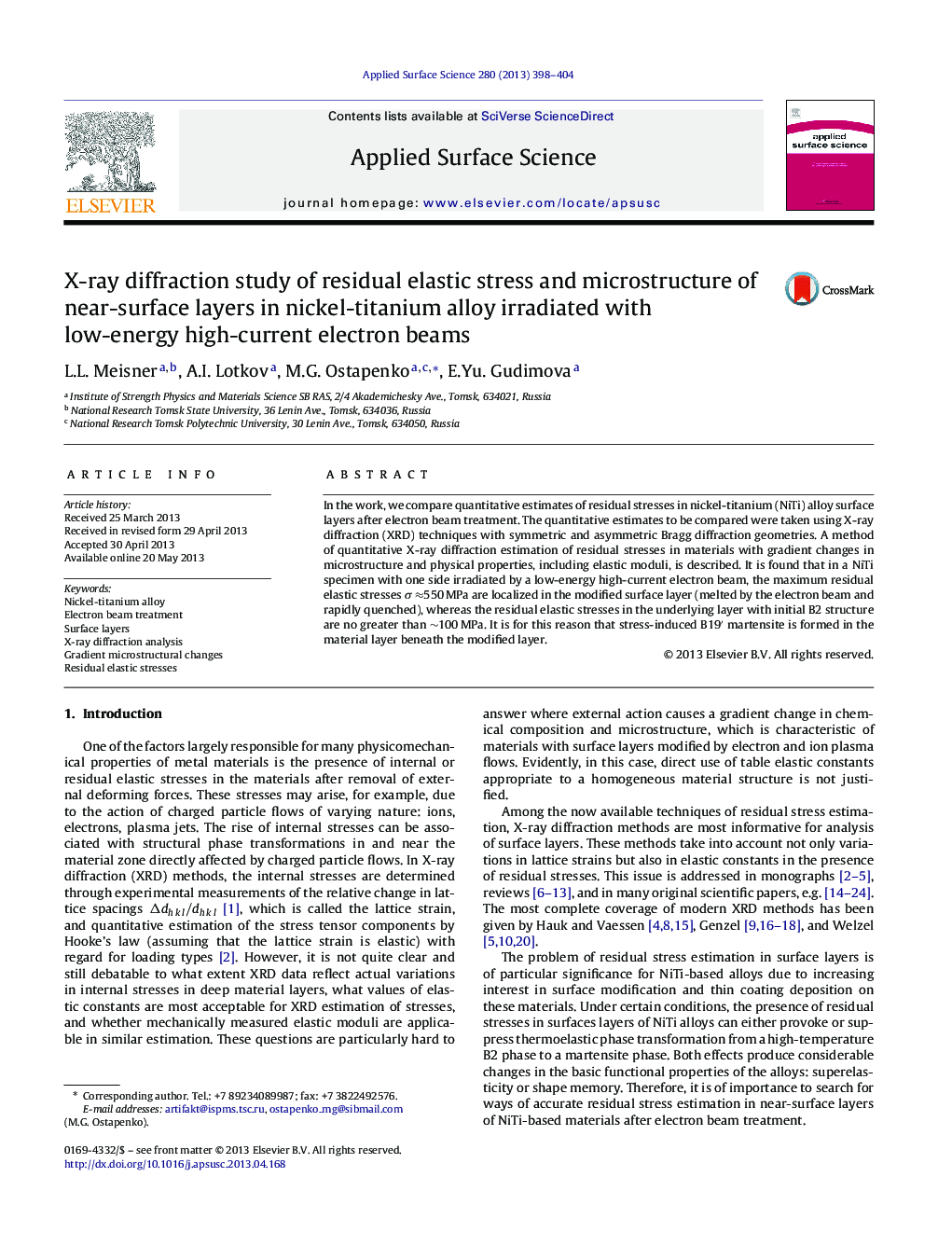| Article ID | Journal | Published Year | Pages | File Type |
|---|---|---|---|---|
| 5353014 | Applied Surface Science | 2013 | 7 Pages |
Abstract
In the work, we compare quantitative estimates of residual stresses in nickel-titanium (NiTi) alloy surface layers after electron beam treatment. The quantitative estimates to be compared were taken using X-ray diffraction (XRD) techniques with symmetric and asymmetric Bragg diffraction geometries. A method of quantitative X-ray diffraction estimation of residual stresses in materials with gradient changes in microstructure and physical properties, including elastic moduli, is described. It is found that in a NiTi specimen with one side irradiated by a low-energy high-current electron beam, the maximum residual elastic stresses Ï â550Â MPa are localized in the modified surface layer (melted by the electron beam and rapidly quenched), whereas the residual elastic stresses in the underlying layer with initial B2 structure are no greater than â¼100Â MPa. It is for this reason that stress-induced B19â² martensite is formed in the material layer beneath the modified layer.
Related Topics
Physical Sciences and Engineering
Chemistry
Physical and Theoretical Chemistry
Authors
L.L. Meisner, A.I. Lotkov, M.G. Ostapenko, E.Yu. Gudimova,
